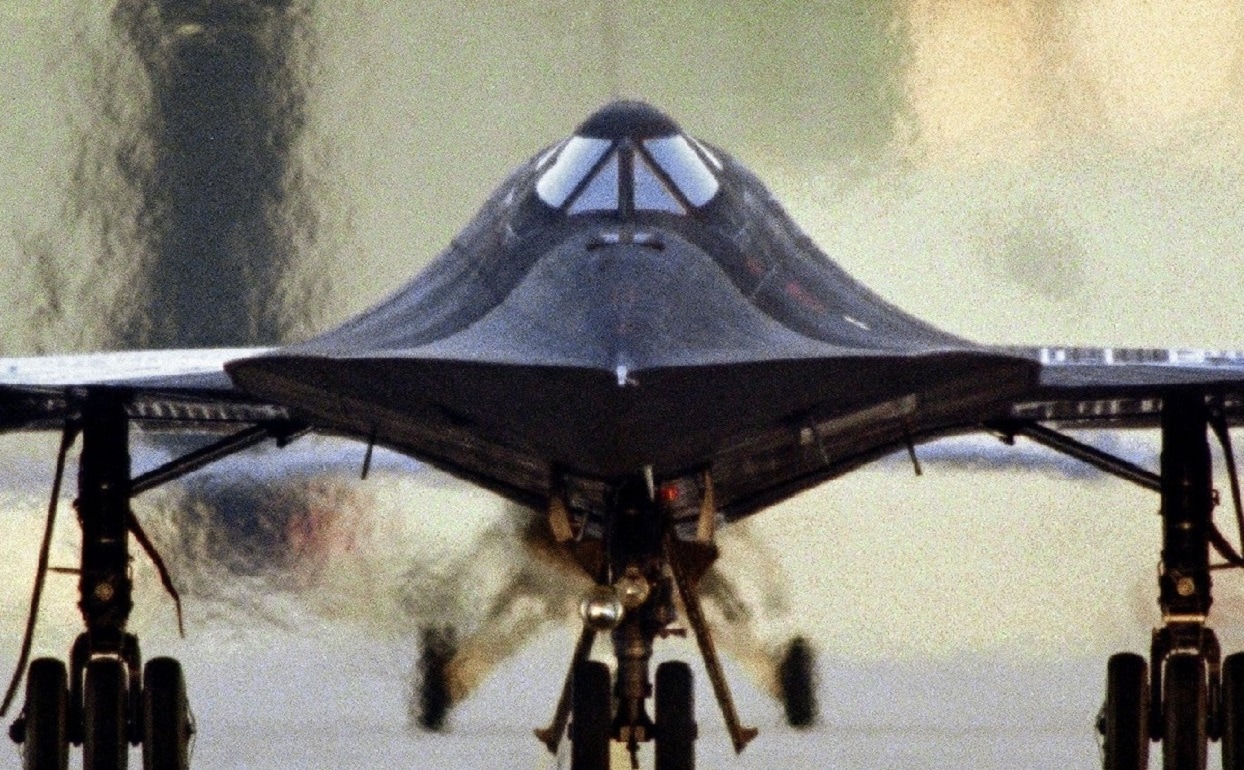The Lockheed SR-71 “Blackbird” was a true speed demon. No interceptor ever really had a chance of catching it. During the aircraft’s nearly 25 years in service, the Blackbird set numerous speed records, and on July 28, 1976, a Blackbird reached an amazing 2,193.167 miles per hour. Flying at roughly 36.55 miles per minute, or 3,216.4 feet per second, it was faster than a bullet fired from the World War II-era M1 Garand rifle, which had a muzzle velocity of 2,800 feet per second.
The SR-71 earned its reputation for incomparable speed. While no aircraft could catch it, neither could missiles. A dozen Blackbirds were lost to accidents during its service history, but not a single aircraft was shot down by an enemy. It reportedly evaded some 4,000 missiles fired its way.
‘For Them, We Didn’t Exist’
Only one aircraft even has the distinction of achieving a radar lock on this fast-flying U.S. Air Force reconnaissance plane. It wasn’t a Soviet interceptor such as the MiG-25, but rather the Swedish-made Saab J37 Viggen fighter that achieved a missile lock and visual contact with the speedy spy plane.
U.S. Air Force pilots also trained against the Blackbird.
As TheAvaitionGeekClub reported, “Former Blackbird driver Col. Richard H. Graham, USAF (Ret.), tells in his book The Complete Book of the SR-71 Blackbird: The Illustrated Profile of Every Aircraft, Crew, and Breakthrough of the World’s Fastest Stealth Jet, there were two fighters that could achieve (simulated) SR-71 kills, but only under certain conditions.”
Apparently, American fighter pilots were only able to lock on the SR-71 after the Blackbird’s own crew switched off the aircraft’s defensive countermeasures.
Former SR-71 pilot Dave Peters further explained, “One of the interesting discoveries from those missions, especially the Eagle Bait, was that they couldn’t even find us when everything was shut down and we told them exactly where we were. It was then realized that the F-15 had a speed gate on their radar at 1500 kts. We were casually warping along from 1850 to 2000. So, for them, we didn’t exist.”
The SR-71 Was Too Expensive to Fly
The one thing the SR-71 could not outrun was costs.
Everything about the aircraft was expensive. The CIA had taken extreme measures to acquire highly prized Soviet titanium for the aircraft’s skin and landing gear. BF Goodrich developed special aluminum-reinforced tires specifically for the Blackbird. The tires had a lifespan of only about 20 landings.
The aircraft cost about $200,000 an hour to operate. While it was more capable than the Lockheed U-2, the Blackbird’s costs were seen as a significant problem. In 1989, the Blackbird was retired. Many SR-71s were sent to museums, while a few were kept in reserve.
In the early 1990s, the SR-71 program was reactivated, in part because a successor had yet to be developed. The aircraft was part of a contentious political debate about U.S. intelligence policy that pitted members of Congress against the Pentagon: Supporters in Congress questioned the Department of Defense’s refusal to use the Blackbird over Bosnia and other global hotspots of the era.
The Air Force argued the old warbird was not integrated with the rest of its modern equipment, and that its cameras took still photos that it could not relay by video to the ground. Instead, the CIA and Department of Defense relied on drones to provide an eye in the sky, along with satellites. Supporters of the SR-71 countered that drones could be (and were) shot down, while foreign militaries could determine when satellites were due to fly overhead.
The SR-71 made its return in part because the aircraft were already bought and paid for, and there were a lot of spare parts. Lockheed Martin’s Skunk Works, which had developed the aircraft, was able to bring the Blackbird out of retirement under a budget of $72 million.
However, the reactivation met more resistance than the plane had faced from America’s adversaries. Air Force leaders simply did not want it, and bringing the Blackbird back into service meant shifting money from other programs. The issue was so contentious that when Congress reauthorized funding, then-President Bill Clinton tried to line-item veto the funding, a maneuver the U.S. Supreme Court ruled was unconstitutional.
In 1998, the program was permanently retired. NASA operated the last two airworthy Blackbirds until 1999. It was an inauspicious end to an aircraft that could do things no other reconnaissance plane could do. While no SR-71 was ever shot down, political infighting and funding issues finally grounded the speedy Blackbird.
Now a Senior Editor for 1945, Peter Suciu is a Michigan-based writer who has contributed to more than four dozen magazines, newspapers and websites. He regularly writes about military hardware, and is the author of several books on military headgear including A Gallery of Military Headdress, which is available on Amazon.com. Peter is also a Contributing Writer for Forbes.

